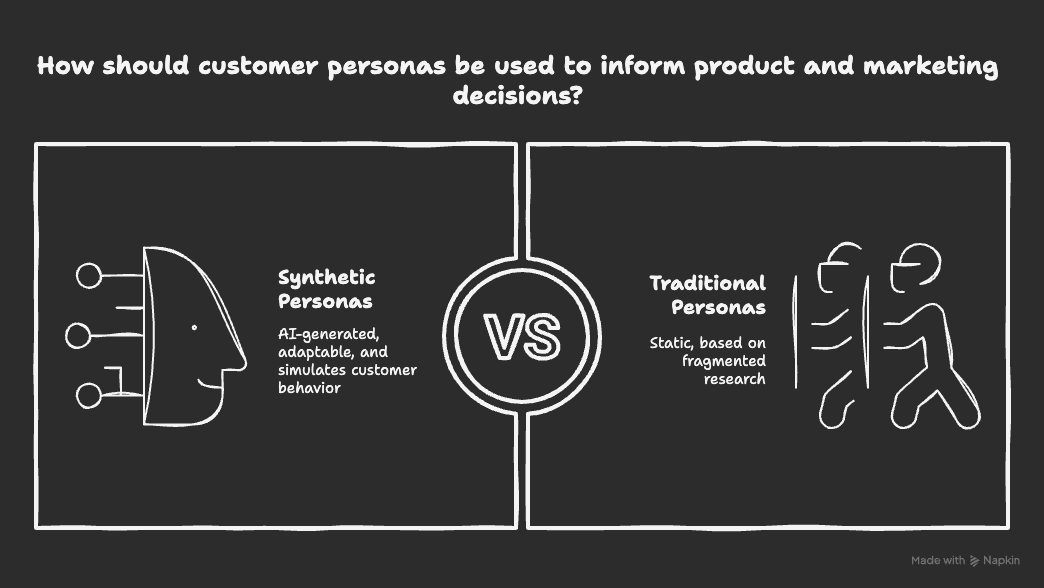From Synthetic to Strategic: Rethinking Personas in the Age of AI
Most customer personas are built like sculptures—carefully crafted, static, and based on fragments of research.
But what if they could breathe?
That’s the promise of synthetic personas—AI-generated stand-ins for real users that adapt, learn, and evolve.
As Olena Zanichkovska points out, these personas don’t just represent customers. They simulate them. You can interview them. Watch them click through your site. Run a campaign past them and see if they cringe or convert.
And yet… this raises a deeper question:
When do we trust synthetic insights? And when do we ground ourselves in real human complexity?
In the example of Super Butcher, a retail chain in Australia, the answer was both. They worked with real people and used synthetic personas.
Using Delve AI, the team uncovered that while men dominated in-store sales, their highest-value online shoppers were actually women aged 24–50.
That insight reshaped everything—from email campaigns to website imagery.
The takeaway?
AI-generated personas are not replacements.
They are mirrors.
They reflect our assumptions—and challenge us to validate them.
That’s the heart of The Helix Blueprint:
Strategy + Design + AI, working in a loop.
→ AI generates insight
→ Design turns it into experience
→ Strategy adapts based on outcomes
So, as synthetic personas rise, the real shift is this:
From designing for people to designing with AI-augmented people.
Curious—where do you see synthetic personas helping (or hurting) product and marketing decisions?
AI Strategy is much more than chatGPT. If you want to understand what AI can do for you, or get started on a idea or work on a strategy challenge, reach out.


